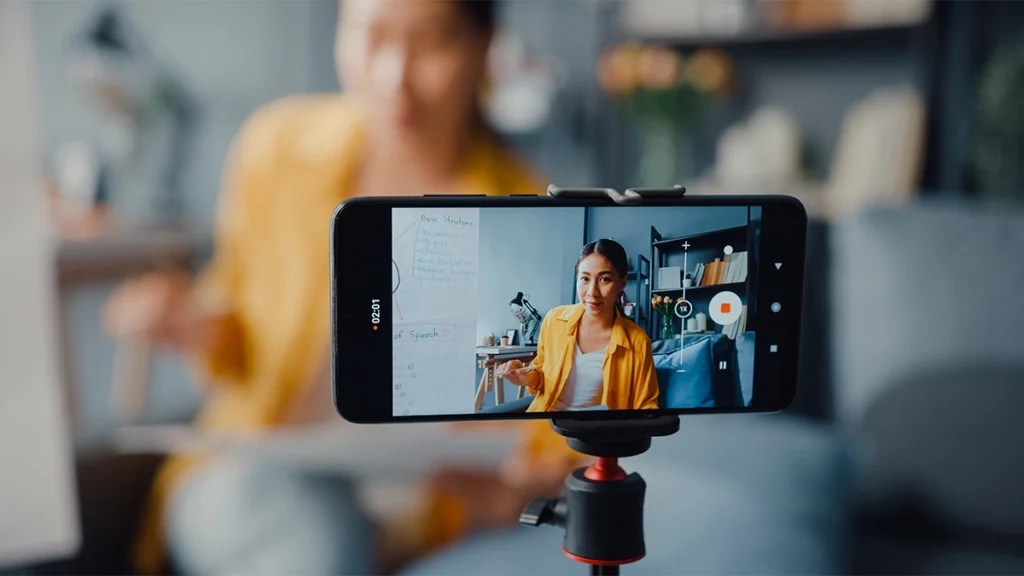Video has quickly become one of the most powerful tools in digital marketing. Whether you’re sharing short clips on Instagram, a polished explainer video on your website, or behind-the-scenes footage on TikTok, video can help your small business or startup connect with your audience in a way that static images simply can’t.
But here’s the catch—diving into video without a clear plan often leads to wasted time, budget, and opportunities. Many beginners make the same avoidable errors that stop their videos from achieving the results they deserve.
In this guide, we’ll walk you through the 7 most common video marketing mistakes beginners make, why they matter, and how you can avoid them—so you can create videos that grab attention, build trust, and drive action.
1. Not Defining a Clear Goal
One of the biggest video marketing mistakes beginners make is creating content without a clear purpose. If you don’t know what you want your video to achieve, you can’t measure whether it’s been successful.
Before you even pick up a camera or open your editing software, ask yourself:
- Do I want to increase brand awareness?
- Am I aiming to generate leads?
- Is the goal to educate my audience or sell a product?
Why it matters:
Without a goal, your video risks becoming unfocused, leaving viewers unsure of what to do next.
How to fix it:
Choose one clear objective for each video and align every decision—script, visuals, and call-to-action—to that goal.
2. Ignoring Your Target Audience
You can’t please everyone, and you shouldn’t try to. A common beginner’s error is creating videos for “everyone” instead of tailoring content to a specific audience.
Why it matters:
When you try to appeal to everyone, your message becomes too generic. That’s when people scroll past without engaging.
How to fix it:
- Create a simple customer profile (age, location, interests, pain points).
- Speak directly to their needs and challenges.
- Use examples, language, and visuals that resonate with that group.
For example, if you run a local bakery, a behind-the-scenes video showing how you make your signature sourdough will connect far more with your audience than a generic “welcome to our bakery” clip.
3. Overlooking Video Quality

Good video quality doesn’t always mean expensive equipment, but it does mean your audience can clearly see and hear what’s going on.
Beginners often underestimate the importance of clear audio, stable footage, and decent lighting.
Why it matters:
Poor quality distracts viewers from your message and can make your business look unprofessional.
How to fix it:
- Film in a well-lit area (natural light works wonders).
- Use a tripod or stabiliser to avoid shaky footage.
- Invest in a budget-friendly external microphone for clear audio.
Even with a smartphone, you can achieve excellent quality if you follow these basics.
4. Forgetting About Storytelling
Too many beginners treat video as a list of features or a rushed product demo. But people don’t just remember facts—they remember stories.
Why it matters:
Storytelling makes your message relatable, emotional, and memorable. Without it, your video risks being forgettable.
How to fix it:
- Start with a hook—something that captures attention in the first few seconds.
- Show the problem your audience faces.
- Position your product or service as the solution.
- End with a clear call-to-action.
Think of it as taking viewers on a journey rather than just giving them information.
Want help telling your story through video?
Check out our video editing services for small businesses
5. Skipping the Call-to-Action (CTA)
It’s surprising how often beginners forget to tell viewers what to do next. Your audience might enjoy the video, but without a CTA, they may simply move on.
Why it matters:
A clear CTA turns passive viewers into active leads or customers.
How to fix it: Decide what you want viewers to do at the end of your video:
- Visit your website
- Sign up for your newsletter
- Follow you on social media
- Make a purchase
Then say it clearly on-screen and in your script.
6. Making Videos Too Long (or Too Short)
Attention spans are short, especially on social media. Beginners sometimes think longer videos automatically mean more value, but often, it just means more opportunities for people to click away.
Why it matters:
The wrong length can cause your audience to lose interest before your message is complete.
How to fix it:
- Keep social media videos short and punchy—ideally under 60 seconds for Instagram and TikTok.
- For YouTube or educational content, go longer but only if the extra time is packed with value.
- Edit ruthlessly—cut anything that doesn’t serve the goal.
7. Not Repurposing Your Content
Creating a video takes time and effort, yet many beginners post it once and move on. That’s a huge missed opportunity.
Why it matters:
Repurposing extends the life of your content and gives it more chances to be seen.
How to fix it:
- Turn a full video into short clips for Instagram Reels or TikTok.
- Pull quotes or key tips into still graphics for social media posts.
- Use the audio for a podcast snippet.
- Add captions and re-share after a few months for new audiences.
Bringing It All Together
Video marketing can be a game-changer for small businesses and startups—but only if it’s done strategically. By avoiding these video marketing mistakes beginners often make, you can create content that not only looks good but also works hard for your business.
To recap:
- Set a clear goal for each video.
- Know exactly who you’re speaking to.
- Prioritise clear visuals and audio.
- Use storytelling to connect with viewers.
- Always include a strong CTA.
- Keep the right length for your platform.
- Repurpose content to maximise its reach.
Final Tip
Start simple. You don’t need a huge budget or a Hollywood-level production team. Focus on clear messaging, consistent posting, and genuine connection with your audience. The rest will come with practice.
If you’d like help planning your first video marketing campaign—or want an experienced team to handle the filming and editing—get in touch with 404 Marketing. We’ll help you create videos that make your business stand out.
faqs
What is the biggest video marketing mistake beginners make?
The most common mistake is creating videos without a clear goal. Without knowing whether you want to build brand awareness, generate leads, or drive sales, your content can feel unfocused and fail to deliver results.
How can beginners improve their video quality without spending a lot?
You can improve video quality by using natural lighting, keeping your camera steady with a tripod, and investing in an affordable external microphone. Even a smartphone can produce professional-looking videos if you pay attention to lighting and sound.
How long should beginner marketing videos be?
For social media, aim for 30–60 seconds to keep attention high. For educational or YouTube content, 3–5 minutes works well if the content is valuable and engaging. Always tailor the length to your audience and platform.
Why is storytelling important in video marketing?
Storytelling makes your content relatable and memorable. Instead of listing features, a good story helps your audience connect emotionally with your brand and see how your product or service can solve their problems.
How often should beginners post marketing videos?
Consistency matters more than volume. Start with one high-quality video per week or fortnight, and gradually increase as you build confidence and a content library you can repurpose.
Can I reuse the same video on different platforms?
Yes—but adjust it for each platform. For example, use vertical videos for Instagram Reels and TikTok, square videos for Facebook, and longer horizontal videos for YouTube.


